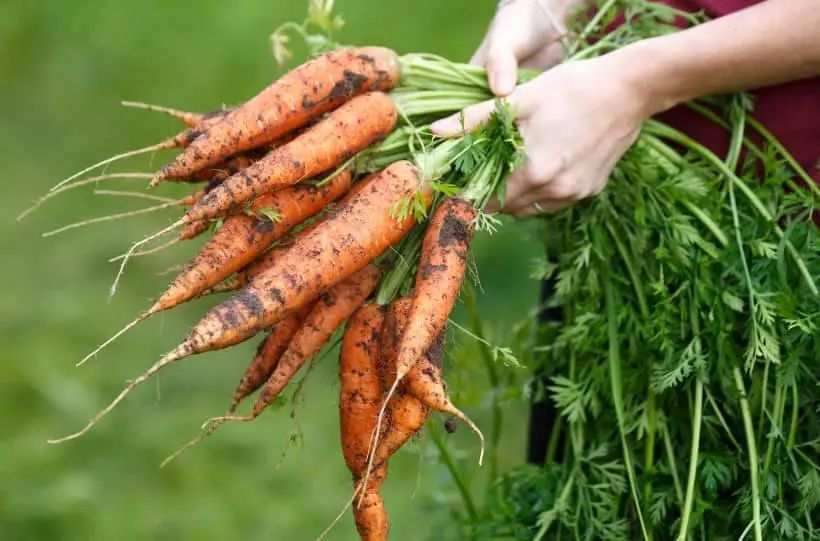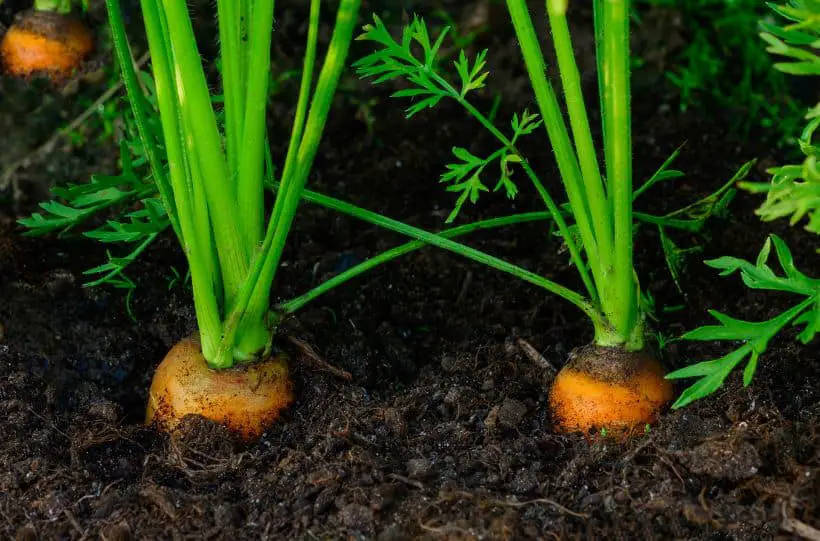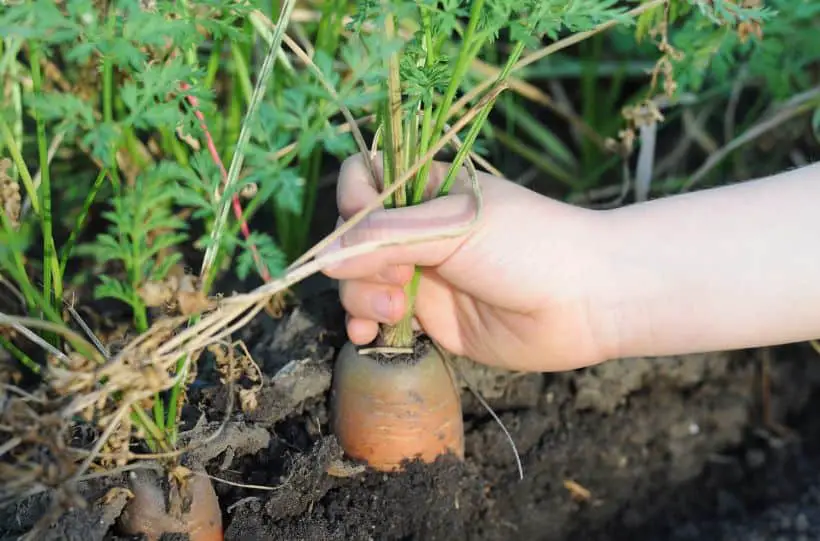Harvesting Carrots: When and How To Pick Carrots
Carrots are an easy and satisfying crop to grow at home. They are tasty, colorful, and when sown right, can be harvested from late Spring to the end of Autumn.
Unlike supermarket carrots, homegrown ones are full of vitamins, grow in different shapes and sizes, and are available outside of the standard bright orange carrots you buy at the shop. Carrots can be purple, red, or yellow.
Once you have selected the varieties you wish to grow, they can easily be grown from seed and take between 12-16 weeks to grow before they can be harvested.
To harvest properly and ensure you don’t harvest your carrots too early, or cause damage to them, take a look at this guide on harvesting carrots the right way.

When Is The Best Time For Harvesting Carrots
Knowing when to harvest your carrots is critical to limit waste and disappointment as each variety differs in the length of time needed to mature from seed.
The best place to start is to consult your seed packet. This will provide an estimation of how long it takes for the carrots to mature and when to check them before harvesting. In general, baby carrots are ready between 50-60 days from planting, while mature carrots take 75 days.
If you have planted your carrots quite close together, another thing to consider is that, without thinning them, you limit the chance of your carrots reaching their full potential.
A good idea is to harvest some carrots whilst they are a little smaller in size to help make space for the remaining carrots to grow. Even though they are smaller, they still taste great and can be used in the kitchen just the same as fully mature carrots.
Finally, check the size of the root that is showing at the top of your soil. If the tops of your carrots aren’t showing, gently brush away the topsoil to expose the top of the roots.

Your seed packets will advise how big these should be on average to know when they are ready to be harvested. However, if you don’t have this information to hand, you can find carrot guides online for different varieties. But a general rule of thumb is that most common varieties will be ready to pick when the tops are 1.5-2cm in diameter.
How To Harvest Carrots
Now you know when to harvest your carrots, it is important to know how to harvest your carrots without damaging them.
Before harvesting, it’s a good idea to water them first, or, harvest them after rainfall. This helps not only hydrate the roots but also loosens your soil. Hard soil will make it difficult to pull your carrots up without the roots breaking. However, if there has been heavy rainfall, allow the ground to dry out slightly as digging your carrots up after heavy rain will create a huge mess.
After watering, use a shovel or fork to dig into the ground around your carrots and loosen the soil. Be careful during this stage of the harvest to ensure you don’t accidentally cut into your carrots.
Carefully wiggle a couple of carrots by the leaves and pull them gently out of the ground.

Check the size of these carrots and confirm whether or not they are ready to be harvested. If the carrots aren’t quite ready then replant them immediately to minimize disturbance. If your carrots are at an ideal size, go ahead and harvest as many as you need.
With a large crop, the good news is that carrots do not have to be harvested immediately as soon as they have matured like many crops. Carrots will last a few weeks still planted in the ground after they have fully grown. You can harvest as many carrots as needed at a time without having too many to use up.
If you do need to store your carrots, make sure to only wash the ones you are using immediately. Remove the leaves and keep the carrots you will be using soon in your fridge, only washing and cutting the tops off when you want to eat them.
The rest of your carrots can be stored in a cool, dark place e.g. a basement or garage. Allow them space to dry out and then they can be stacked in a box or bucket between sawdust or sand.
Carrots can continue to be harvested up until the first frost, depending upon when you initially planted your carrots For carrots planted in late summer, they can be harvested after the first frost. The frost encourages carrots to store sugars making them sweeter in flavor once harvested.
Frequently Asked Questions
What month are carrots harvested?
This depends on when your carrots were planted and their length of growing time till maturity. Carrots are generally sown from seeds between February and July. Early planted carrots are ready to be harvested in late Spring, with late summer carrots harvested in late Autumn.
How can you tell when carrots are ready for harvesting?
You can check whether your carrots are ready for harvesting in three ways:
- Double-check your seed packets. These will state the length of maturity and what size to expect for your carrot tops
- Harvest a couple of carrots as a test run to see how big they are, whether they need longer in the ground, and to help thin out your carrot plants
- Measure the size of the top of the carrot roots. Most varieties are ready to harvest when the top of the root is 1.5-2cm in diameter.
How to store carrots?
Carrots need to be stored unwashed and covered in a cool, dark environment to mimic being in the soil. Place your dried carrots in a container that is covered in sand, peat moss, or sawdust. Ensure your carrots are not touching one another to help them last longer. Make sure to read this detailed guide to storing your carrots properly.
Can you replant carrots if pulled too early?
Yes, you can! If your carrots are too small, make sure to replant them immediately in the same place you pulled them out of the soil. This will help minimize any disturbances and disruption to their environment and growth potential.
And for more on growing carrots in your garden, check out these next:

